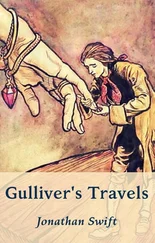Lesley was no longer April’s daughter, but police evidence, which must not be touched.
‘Is this your daughter, Mrs Molseed?’ speaks an unknown voice, and she does not look to find the speaker, but replies ‘It is, but she doesn’t belong to me any more.’ And then and only then the resolve of the woman is gone, the strength she had shown or tried to show throughout the three-day ordeal, disappears. At last she weeps, and her eyes blur with tears. She turns away.
April rejoined Danny. He did not have to ask her and she did not have to tell. He had ‘inherited’ Lesley as a 1-year-old, and she was the favourite of his four foster children. He had lost his own daughter, he felt, and his tears flowed down his face, its expression as desolate as that of his wife.
CHAPTER THREE
Of Science and Pounding Feet
In terms of the investigation of homicides, there are only two primary types. The first is where the killer is immediately identified or identifiable, and apprehended at or shortly after the event, and where the legal issues at any subsequent trial narrow down to those concerning state of mind at the time of the killing. The second is where the killer is completely unknown. In such a case, of course, the first task on the lengthy path to securing a conviction is ascertaining who is responsible for the killing. Obviously the investigation of the latter type is far more onerous than that of the first, because the police start, in effect, with a completely blank sheet of paper.
In any homicide it is necessary to establish a number of facts:
identity of the victim;
manner and cause of death (for example, asphyxiation by strangulation);
time and place of death;
weapon used, if any;
identity of killer;
motive;
state of mind of killer.
These facts must be determined in order that the investigation of the case be complete. Even if some of the facts (such as motive) do not, as a matter of law, require proof for a successful prosecution, it is obvious that they are each of great importance in the quest to establish how the victim died and at whose hand.
Once it is established that the police are concerned with a suspicious death and, more particularly, once the suspicion becomes that of an unlawful killing, the investigative process begins. Of the seven factors listed above, the identity of the killer becomes the most pressing. All other matters will be investigated as the enquiry proceeds, but the search for the killer must begin immediately, and before the trail begins to cool.
Whilst the public face of a murder investigation is the television news reports, showing police officers searching fields on hands and knees, scouring for the most minute of clues, and the further reports of house to house enquiries, there is, from the moment the body is discovered, a far more private aspect of the investigation. It takes place in the clinical sterility of the laboratory and in the case of Lesley Molseed, it was a side of the investigation which was to have substantial and profound implications.
High on the moors, away from the anguish of the Turf Hill Estate and the homeliness of 11 Delamere Road, Dick Holland presided over the murder scene, one eye on his watch as he awaited the arrival of the forensic and pathological support services. He was only too aware that the further away from the moment of killing he got, the more difficult it would be to find his man. Moreover, the passage of time accompanied intrusions into the evidence: a wind blowing across the moors could blow away a fragment or fibre, a rainstorm could destroy footprints, a less-than-careful bobby might obliterate some tyre tracks, or the killer himself could dispose of clothing, or a vehicle, or a weapon.
Anxious to preserve the murder scene in at least one respect, Holland had directed PC Stuart Akerman to take a series of photographs, of the features of the moorland and the area in which the child was found, and of Lesley’s body itself, in situ , before there could be any further disturbance of the area. He was confident that the body had not been moved by Greenwell or DC Roberts, and therefore had no reason to suspect that the child was not in the same position as she had been left by the murderer. One further photograph. A seemingly innocuous print of a blue-grey coloured fibre-tipped pen, with a white cap and base, found on a rock about fifteen yards from the body, in a direct line between the body and the lay-by. If every picture does in fact tell a story, what tale would be told by the print of this harmless writing instrument?
Senior colleagues of Holland began to arrive at the lay-by. Awaiting the arrival of the pathologist, there were a number of officers of the West Yorkshire police force, among them Assistant Chief Constable Donald Craig, DCS Jack Dibb and Detective Chief Superintendent George Oldfield (whose name would later become inextricably linked with the investigation into the crimes of the Yorkshire Ripper). Officers from the adjoining Greater Manchester force who covered the area from which Lesley had disappeared were also present.
At 10.30 a.m., the assembled officers witnessed the arrival of Home Office pathologist Professor David John Gee. Holland briefed Professor Gee with a thumbnail sketch: the identity and age of the victim, when and where she went missing, when and how she was found and that the body had not been moved since its discovery. The professor prepared to view the body. He was accompanied by trainee pathologists Dr Boateing and Dr Swaloganathan, and by Home Office forensic scientists Ronald Outteridge from the Harrogate laboratory, and a Mr Firth from the laboratory at Chorley. The forensic scientists would examine the scene, removing samples of grass and vegetation from around the body, and soil and stone samples both from the site where the body was found, and from the lay-by. Clear plans would indicate the exact location from which each sample was obtained, and the bags containing the samples would be marked accordingly. Later, they would examine the clothing of the deceased and any samples obtained by the pathologist.
Police officers continued to work, first with a finger-tip search of the immediate area, then with a wider, less-detailed rake over a more extensive area, hoping to find anything relevant but, in particular, the weapon used to end this tiny child’s life.
The pathologist’s work would primarily take place in the mortuary, after the body had been moved from the scene, but it was important for him to view the body in situ as it would help him to determine whether that was the place where the murder had taken place, or whether the child had died elsewhere and then been moved there. He would go on to consider the injuries, how they were inflicted and in what order, and which one or ones had been responsible for the death.
Times were vital factors for all the investigators, since they would attempt to provide a band of times within which death had occurred. These parameters would be crucial in eliminating suspects who were able (as Greenwell already had done) to account for their movements within those times.
An access route to the body had been created, so that the scientists could make their way to the corpse without fear of intruding upon any potential evidence. Ascending the steep grassy bank from the lay-by, the men reached a broad, grassed terrace from where they could see, beyond, a rock-strewn slope, steeply rising to the moorland proper far above. At the back of the terrace, some fifty yards from the roadside, they saw, as Greenwell had seen, mere cloth blowing in the stiffening breeze, which, only on closer inspection, became their ultimate objective: the body of a child lying face down in the coarse grass. It was still clad in the dark-blue gabardine raincoat, the hood raised over the back of the head so as to obscure the hair and other features. The left arm was bent up at the side of the body towards the face, the right arm was beneath the child. The thin legs were flexed at the hips, somehow twisted to the left, and the trunk was tilted slightly to its right. The skirt of the raincoat was somewhat displaced upwards, exposing an area of white padded lining, and beneath that could be seen a pink skirt and a pair of red knickers. The blue shopping bag lay across the feet, not quite obscuring the brown shoes, and the Bay City Rollers socks of which Lesley had been so proud.
Читать дальше











